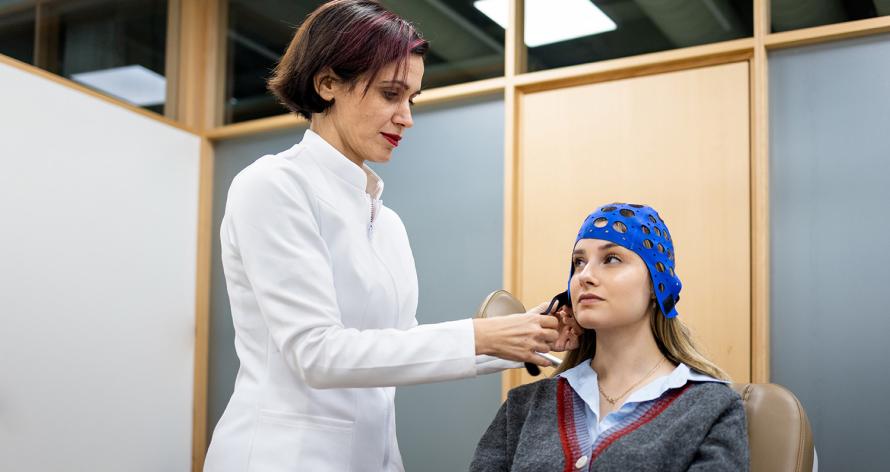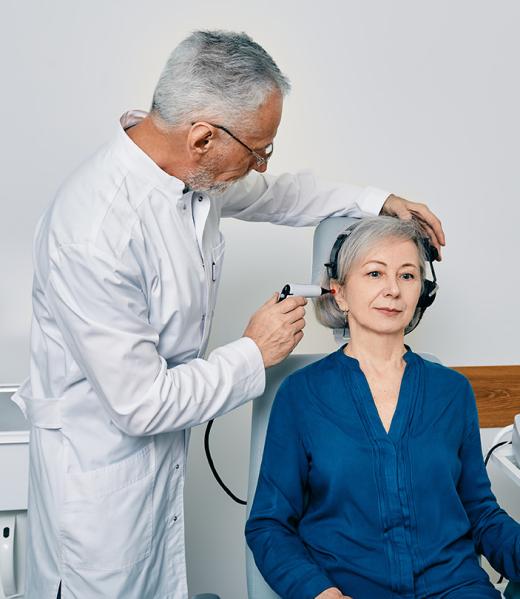TMS may help.
Migraines, Major Depressive Disorder, Obsessive Compulsive Disorder, Anxiety Disorder, or Smoking Cessatioon. Find out more here.
TMS works by delivering magnetic pulses to a specific area of the brain involved in mood regulation, cognition, and other functions. This stimulation can help to improve brain function and reduce symptoms of the underlying condition.
Conditions
Migraine Headaches
TMS treats migraines by using magnetic pulses to regulate abnormal electrical activity in the brain, which can prevent and alleviate symptoms. For acute treatment, a single pulse applied to the occipital cortex during a migraine with aura can stop it from developing. For prevention, repetitive TMS (rTMS) can normalize brain excitability over time, leading to fewer migraine days.
Obsessive Compulsive Disorder (OCD)
TMS treats OCD by using magnetic pulses to stimulate specific brain areas, such as the prefrontal cortex and anterior cingulate cortex, that are underactive or overactive in individuals with the disorder. This stimulation helps to regulate neural activity, reduce obsessive thoughts, and decrease compulsive behaviors by rebalancing the brain's circuits. For some, this can lead to a significant reduction in symptoms, especially if other treatments have not been effective.
Major Depressive Disorders
TMS treats major depressive disorder by using electromagnetic pulses to stimulate nerve cells in brain regions that regulate mood, particularly the dorsolateral prefrontal cortex. These pulses are delivered through a device with a magnetic coil placed on the scalp, and the treatment is non-invasive, does not require anesthesia, and can be done on an outpatient basis. The stimulation is thought to help "reset" dysfunctional brain patterns associated with depression, increase synaptic plasticity, and improve symptoms over a series of sessions.
Anxiety Disorders
Transcranial magnetic stimulation (TMS) treats anxiety disorders by using electromagnetic pulses to stimulate underactive areas of the brain, such as the dorsolateral prefrontal cortex, to help regulate mood and reduce anxiety symptoms. The stimulation can increase or decrease activity in areas like the amygdala, which is involved in the "fear center" of the brain, and help create new neural pathways to improve brain activity. This non-invasive treatment is often used for those with treatment-resistant anxiety and is delivered in sessions over several weeks.
Smoking Cessation
Deep TMS: Deep TMS is the only non-invasive medical device FDA-cleared for short-term smoking cessation. It uses electromagnetic pulses to stimulate neurons in the bilateral insula and prefrontal cortex, reducing tobacco cravings and increasing cognitive control.
When Medication Isn’t Enough — Discover the Power of TMS

Professional & Trustworthy
Our team of professionals is ready to help you discover the power of transcranial magnetic treatment. This non-invasive treatment is FDA approved and has been in use since the 1980s.
History of TMS
TMS began with early research in the 1980s, with Anthony Barker and his team introducing the first device in 1985, initially for research and diagnosis. It was used to map brain function by stimulating the motor cortex, but its therapeutic potential, particularly for depression, was explored in the 1990s. A major milestone was the FDA's 2008 clearance for treating medication-resistant depression, which marked the start of its broader clinical adoption.
Your questions answered
What are your operating hours?
We are ready to serve you Monday through Friday from 8 a.m. until our last appointment but we do require appointments for TMS services.
How do I schedule appointments?
To schedule an appointment, call (318) 227-4088 or fill out the form to be included in our waiting list.
What insurance do you accept?
We accept most insurance. Please include the name of your insurance on your form so that our team can confirm.


